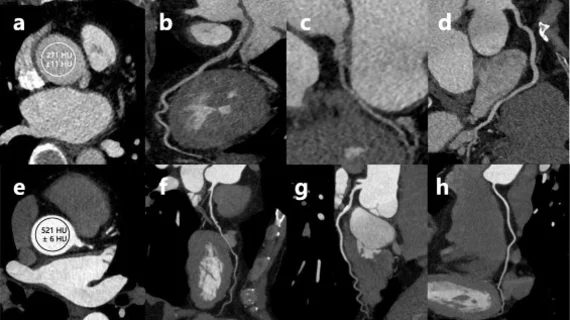Patient-specific versus fixed post-trigger delay: Which offers superior CCTA image quality?
Bolus tracking using patient-specific post-trigger delays offers better image quality in coronary CT angiography (CCTA) in comparison to fixed delays, according to newly published data.
The new paper, published in the European Journal of Radiology, details experts’ comparison of peak enhancement timing of a patient-specific post-trigger delay (PTD) and a fixed PTD during CCTA. Experts found that patient-specific PTD produced consistently better image quality and vessel enhancement than fixed PTD, which could be beneficial in developing care plans for patients, authors of the new study suggested.
“Despite the wide adoption of the traditional bolus tracking method, the individualized variation still prompts for further improvement, as the fixed PTD may overlook some personalized characteristics (weight, cardiac function, etc.) and scanning parameters (tube voltage, scan duration, etc.),” corresponding author of the new paper Jie Liu, of the Department of Radiology at the First Affiliated Hospital of Zhengzhou University in China, and co-authors explained. “For instance, participants in different cardiovascular conditions could present various time density curve and therefore their optimal scan timing shall be adjusted.”
In patient-specific PTD, a convolution-based algorithm derives data from contrast injection and measurement monitoring. The bolus tracking software uses this information to automatically predict the optimal trigger delay time. The method can optimize both contrast dose and scan times, the authors noted.
For the study, the team analyzed imaging from two groups of patients—102 who underwent CCTA using a fixed 5-second PTD (Group A) and another 102 with patient-specific PTD (Group B). Experts observed a strong correlation with reference peak timing and consistency with scan timing in the patient-specific PTD group, and vessel enhancement was significantly higher in all coronary vessels within that same group.
Two readers also rated the patient-specific PTD group’s images as having better subjective quality.
“With the software implementation of the algorithm into research scan protocols, future application of such method could integrate more seamlessly with clinical workflow,” the group said, adding that this would broaden its benefits.
The study abstract is available here.

